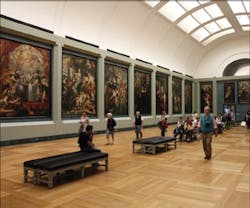Focus on Mission and Demand in Cultural Facilities
A recently released study, Set in Stone, examines a major building boom of museums, performing arts centers, and theatres in the U.S. from 1994-2008. It allows decision makers to better plan for new or renovated cultural facilities.
By focusing on the arts organizations’ missions and assessing demand for the projects, civic leaders, arts organizations, donors, and government officials can design new or expanded cultural facilities more effectively.
The report was based on interviews with people in more than 500 organizations and drew data from over 700 building projects that cost between $4 million and $335 million. The building boom in cultural facilities from 1994-2008 outpaced building in other sectors.
“Each of these projects was based on the assumption that a new facility would help increase audience size, increased earned and donated income, and at least indirectly, help realize the institution’s mission,” says Carroll Joynes, co-founder and senior fellow at the Cultural Policy Center. However, as the report notes, there is no assurance that “if you build it, they will come.”
Before formulating a final plan, institutional leaders and donors must take time to adequately understand the precise reasons for launching a major building project, determine if there is actual need, and see if there is adequate support in the community for both attendance and financial support.
More than 80% of the projects studied ran over budget, some by as much as 200%. The most successful projects are driven by both the organization’s artistic mission and a clear, definable need, the study suggests.
The study was released by the Cultural Policy Center, a joint project of the University of Chicago Harris School of Public Policy Studies, and independent research organization the National Opinion Research Center (NORC) at the University of Chicago.
It can be found at culturalpolicy.uchicago.edu.
